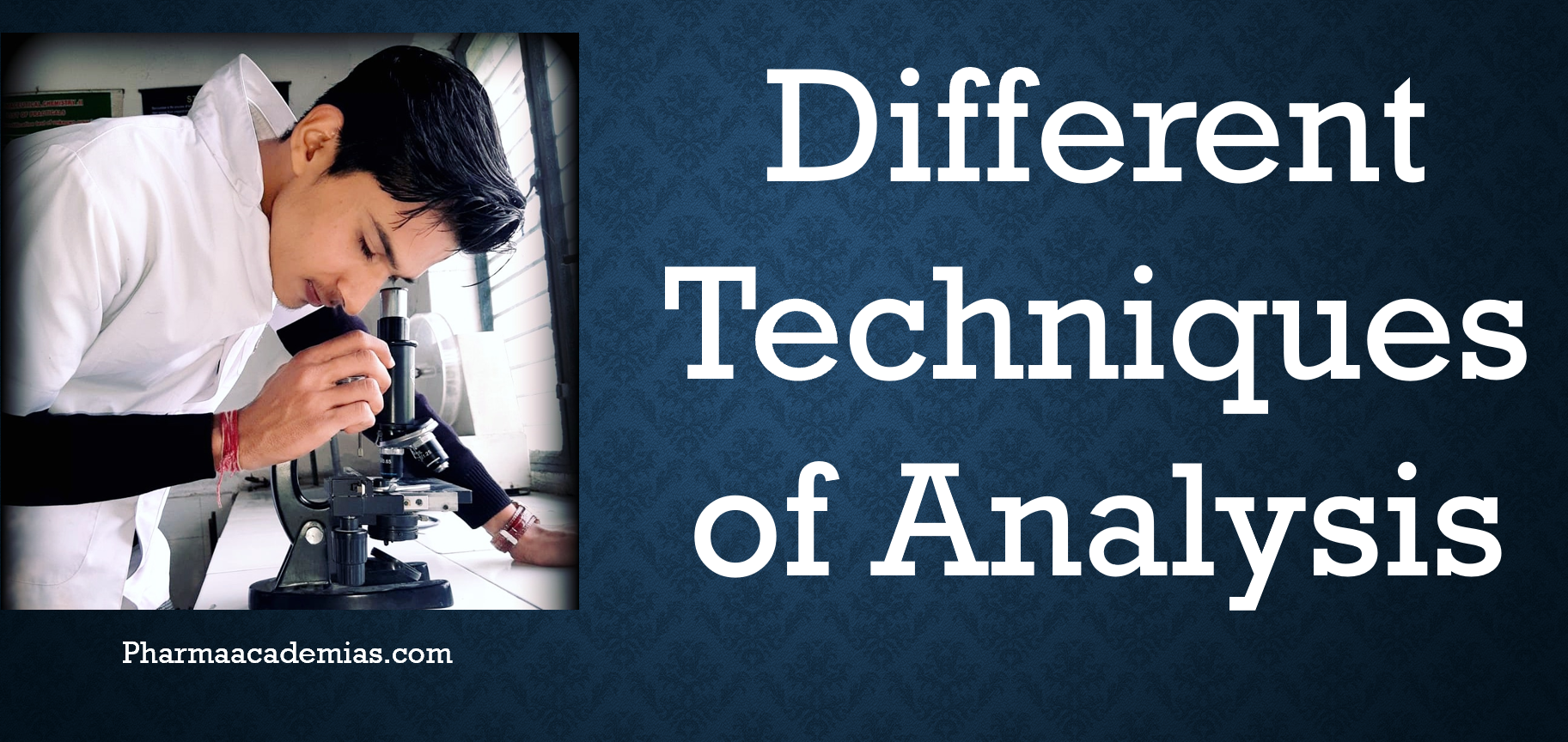Various analytical techniques are employed in scientific research, industry, and many fields to examine and understand different substances, materials, and data. These techniques help provide valuable insights, solve problems, and make informed decisions. Here’s a note on some of the different techniques of analysis used in various fields:
1. Spectroscopy:
Spectroscopy involves studying the interaction of matter with electromagnetic radiation, often in the form of light. It includes techniques such as:
UV-Visible Spectroscopy: Measures the absorption of ultraviolet and visible light, useful for determining the concentration of substances.
Infrared (IR) spectroscopy: analyzes the absorption and emission of infrared radiation to identify functional groups in organic compounds.
Nuclear Magnetic Resonance (NMR) Spectroscopy: Provides information about the structure and dynamics of molecules.
Mass Spectrometry (MS): Identifies and quantifies the chemical composition of substances by measuring the mass-to-charge ratio of ions.
2. Chromatography:
Chromatography is a technique used to separate and analyze mixtures. Key forms include:
Gas Chromatography (GC): Separates and identifies volatile compounds in gaseous or vaporized form.
Liquid Chromatography (LC): Separates compounds dissolved in a liquid, often used for pharmaceutical and environmental analysis.
Thin-Layer Chromatography (TLC): Separates compounds on a thin material like silica gel.
High-Performance Liquid Chromatography (HPLC): A more advanced version of liquid chromatography used for high-resolution separations.
3. Microscopy:
Microscopy techniques allow scientists to visualize and analyze objects at the micro and nanoscale, including:
Optical Microscopy: Uses visible light to view specimens, including brightfield, phase contrast, and fluorescence microscopy.
Electron Microscopy: Employs beams of electrons to achieve higher resolution than optical microscopy, including transmission and scanning electron microscopy.
Atomic Force Microscopy (AFM): Examines surfaces at the atomic and molecular levels using a tiny, sharp probe.
Confocal Microscopy: Produces high-resolution images by eliminating out-of-focus light.
4. X-ray Analysis:
X-rays are used to determine the atomic and molecular structure of materials, including:
X-ray Crystallography: Reveals the arrangement of atoms within a crystal lattice, providing insights into chemical structures.
X-ray Diffraction: Identifies the repeating structural patterns in a material to understand its properties.
5. Nuclear Techniques:
These involve the use of nuclear properties for analysis, such as:
Radioactive Isotope Analysis: Uses radioactive isotopes to trace chemical reactions and biological processes.
Neutron Activation Analysis: Determines the elemental composition of materials by bombarding them with neutrons.
6. Thermal Analysis:
Measures how materials change in response to temperature, including:
Differential Scanning Calorimetry (DSC): Determines heat changes associated with phase transitions or chemical reactions.
Thermogravimetric Analysis (TGA): Measures changes in weight as a function of temperature.
7. Molecular Biology Techniques:
These include methods to study biological molecules, such as:
Polymerase Chain Reaction (PCR): Amplifies DNA for analysis or cloning.
Gel Electrophoresis: Separates biomolecules, like DNA, RNA, and proteins, based on size and charge.
8. Data Analysis Techniques:
These encompass various methods to analyze and interpret data, including:
Statistical Analysis: Involves using statistics to describe, analyze, and draw conclusions from data.
Machine Learning and Data Mining: Utilizes algorithms to identify patterns and make predictions from large datasets.
These techniques are essential tools in chemistry, physics, biology, material science, environmental science, and many others, enabling researchers and professionals to investigate and understand the properties and behavior of various substances and materials.

